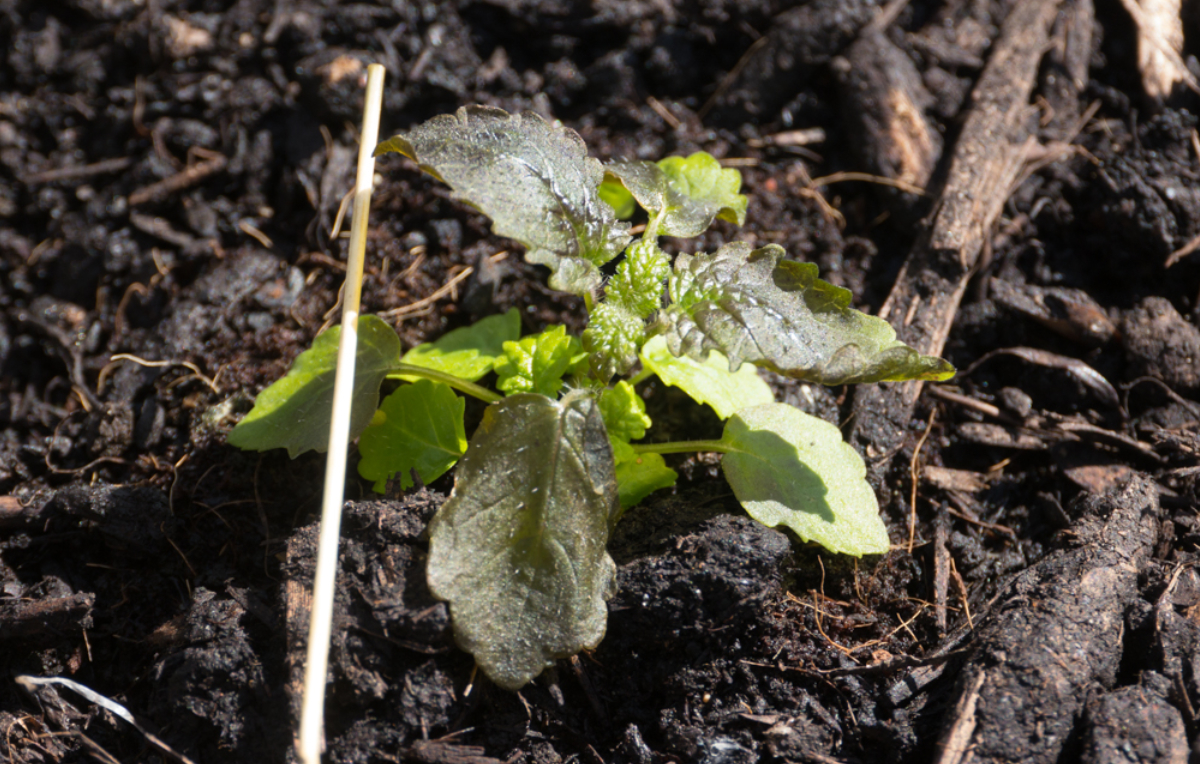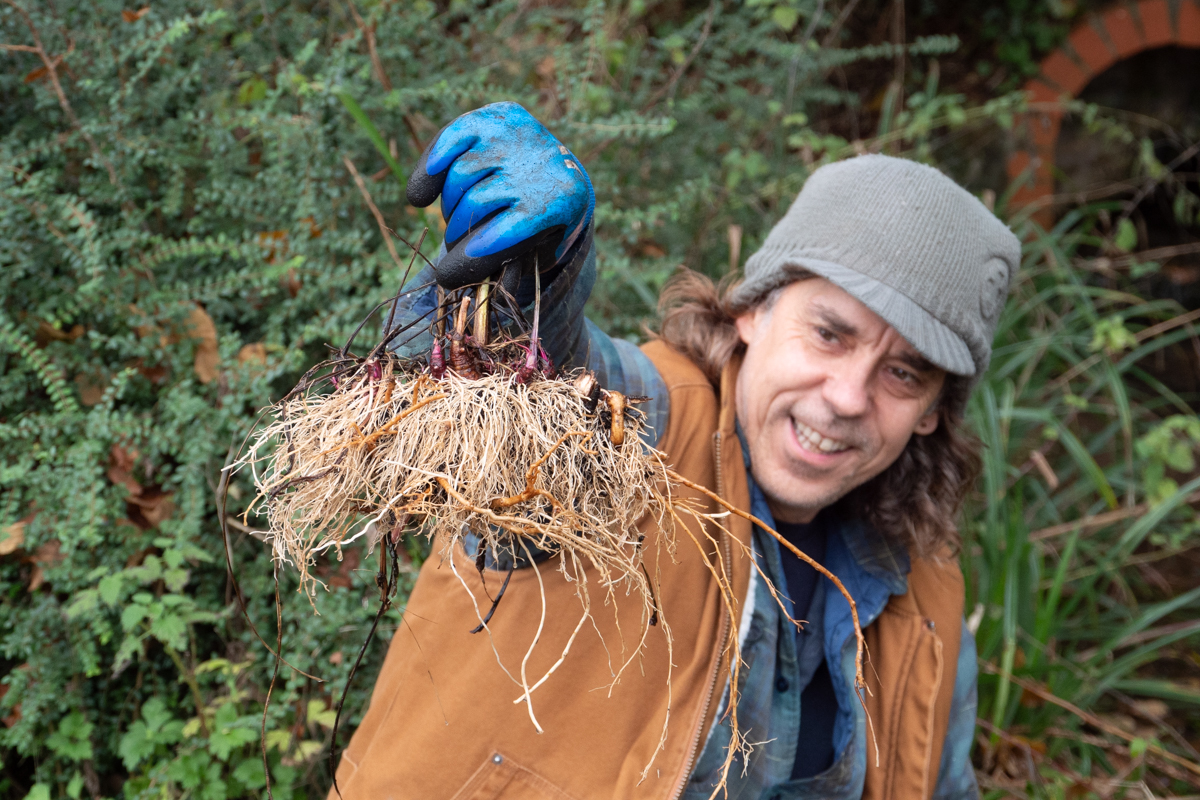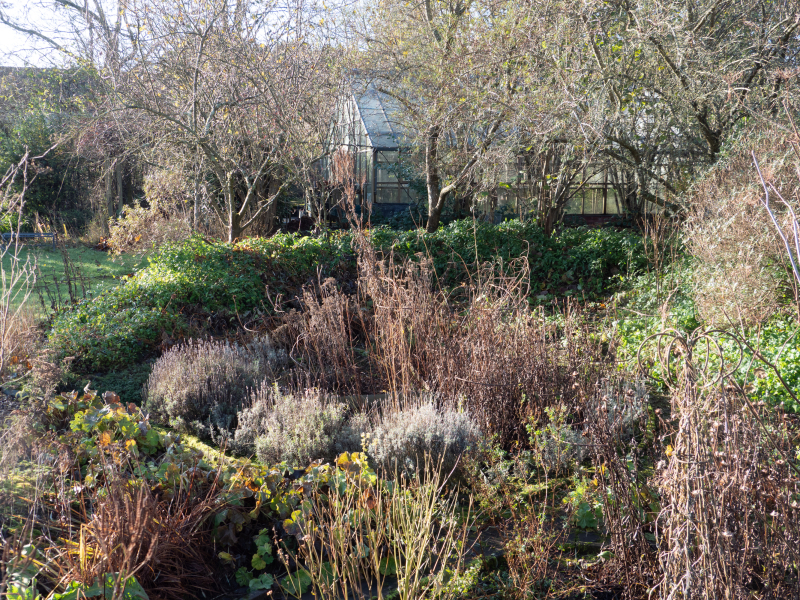Winter jobs in the herb garden
Winter is a time for slowing down, reflection and planning. Just as the plants retreat back into the soil, we tend to retreat back into the refuge of our homes and wait for the warmth to return. But there are still plenty of jobs to do over the winter months, and when you do make it out, especially on those cold, frosty days when the sun is shining, the winter herb garden can be a magical place of quiet and stillness.
1. Reflecting, planning and preparation
With time to reflect, how was your last year in the herb garden? Did you manage to grow everything you wanted to grow? Did you make that echinacea tincture that you were planning to make? Or those calendula salves that you were planning to make everyone for Christmas? If not, how can you be better organised for the year ahead? What seeds or plants do you need to buy and when? Maybe now is a good time to buy those little salve jars and some beeswax (see our blog on how to make a salve for inspiration).
The filter system on our seed pack shop page is a useful tool for narrowing down which herbs you might want to grow. Are you particularly interested in growing your own herbal teas? Or perhaps you’re looking for something to calm your nervous system and help improve your sleep? But you only have a small garden and most of it is in semi-shade… hopefully the filter system can help you find the right herbs.

2. Buy seeds and plants
With Spring approaching, now is the time to order your seeds. Don’t leave it too late, especially as some seeds benefit from late winter stratification. Every year in the Seed Shed we observe how most people start ordering seeds as soon as there is a hint of Spring in the air, but if you really want to be ahead of the game, it’s best to start thinking about it while you’re still indoors and huddled around the fire.
We also sell a small range of bare root plants between Autumn and Spring, and live-plants from mid-April up until late Summer. Buying plants is a good way of getting a head-start, especially with the slower-growing perennials. If you’re still keen to make that echinacea tincture, buying a few bare root plants will enable you to start harvesting roots by the end of year 1 or 2, instead of year 2 or 3.
3. Take care of existing plants in the garden
Most of the herbs that we offer are quite hardy and can tolerate the cold and wet winters we get in the UK. There are a few, such as ashwagandha and electric daisy, which will not survive a UK winter, and others, such as licorice mint and codonopsis, that don’t always make it through sustained cold or wet (codonopsis can withstand heavy frosts, but not waterlogged roots). Again, you can use our filter system or species page to check the hardiness of the herbs that we offer. If they are vulnerable to the elements you can use horticultural fleece, cloches, or cold frames to keep them protected. If your plants are hit by a heavy frost, many do recover, but if they have been hit badly it can be good to remove the worst of the damaged foliage to prevent rot from spreading.
Irrigation is not going to be at the top of your priority list in the winter, but it’s important to occasionally water plants that are overwintering in the greenhouse or in a cold-frame. Be cautious though, as it’s easy to overwater them and cause the roots to rot.
Another job you can do in the winter, if you haven’t already done it, is to cut back the dead foliage from the previous growing season. Some people delay cutting back until Spring as it provides important habitat for over-wintering insects, as well as a food source for birds. We tend to gradually cut back over the winter, leaving certain plants intact for the birds to feed on. We have written about the pros and cons of cutting back in more detail in the Autumn jobs blog.

4. Cleaning and Hygiene
Winter is the perfect time to tackle those jobs you never quite get around to during the growing season, including cleaning and tidying your tools and workspace. The time you invest in maintaining and improving hygiene will pay off with healthier plants, fewer pests, and a more productive garden in the months ahead.
Spray and scrub out old pots to remove pests, eggs, and fungal spores. This will massively reduce the risk of slug damage and seedling diseases like damping-off in the Spring. While you’re thinking about slugs, you might consider finding innovative ways to raise your precious pots off the ground in the Spring – don’t wait until they start eating your precious seedlings before taking action.
By the end of each winter our polytunnel is covered in green algae. We’ve tried all sorts methods to clean it off and found the most effective is the bristly side of a washing up sponge. There’s no need to use chemicals – a good bit of elbow grease (and a long handle) is all that is needed.
And it’s a perfect time to service your tools; remove dirt and rust, sharpen blades, and oil any moving parts. A clean, well-maintained tool is a joy to use and lasts longer. And imagine starting the spring season with a well-organised shed or greenhouse – you’ll thank yourself later!
5. Take Care of Your Beds
Even in the cold months of winter, certain weeds will keep growing. Pulling them out now will save time in the Spring when you’ll have many other jobs to be thinking about. And if you have already cut back your plants, this is the one time you’ll have clear access to the beds to add compost if needed. Remember though, many herbs thrive in low-nutrient soils, so think twice before adding large amounts of rotted manure. Save that for your vegetable beds.
If the bed has become compacted from people walking on it, it may need a bit of aeration; you can do this by pushing a garden fork into the soil and gently moving it back and forth. This will help air reach the roots of your perennials and improve drainage. If you’ve got a large herb garden and are using the no-dig technique, you might consider buying yourself a ‘broadfork’ especially for this purpose. And of course, while you’re thinking about drainage, check your beds to make sure you don’t have piles of autumn leaves preventing excess rainfall from draining away, resulting in waterlogged roots.
6. Propagation
The best time to divide perennials is in late autumn or early spring, but you can still get away with dividing plants in the winter, especially if the weather is mild. Start by carefully digging up the parent plant, ensuring you preserve as much of the root ball as possible. Use a sharp spade or knife to divide the clump into smaller sections, each with a healthy portion of roots and a few growing points. Once divided, replant the sections promptly, spacing them appropriately to allow room for growth in the spring.
The winter months are also a good time to take hardwood cuttings. This won’t apply to most of the herbs that we offer on our website, but you might be interested in propagating bushes and trees such as cramp bark, hawthorn and elder, all of have an important place in the herb garden and home apothecary.
7. Continue enjoying the fruits of your labour!
If you’ve had a productive year in the herb garden then hopefully you’ll have cupboards full of dried herbs and tinctures to keep yourself in good health over the winter months. But if your cupboards are empty, not to worry, some herbs just keep giving; none more so than the herbs immortalised in the words of Simon and Garfunkel: parsley, sage, rosemary and thyme. Be mindful though; these hardy plants grow and regenerate very slowly in the winter months so only harvest small amounts at a time.
You can also continue harvesting roots in the winter months. The common consensus is that the ideal time for harvesting roots is in autumn and early spring, but if you’re run down and feeling a scratchy throat coming on, then that may be the ideal time to dig up an echinacea root to make yourself a fresh decoction. And whilst you’re at it, you can of course divide it into four and plant three of those clumps back in the ground for next year’s tincture.




